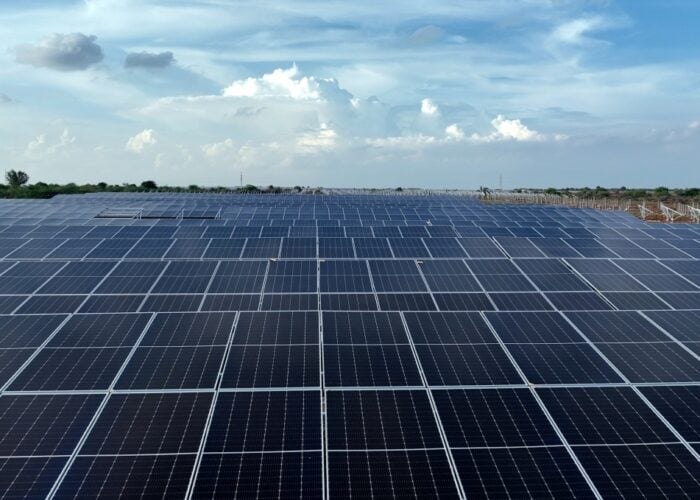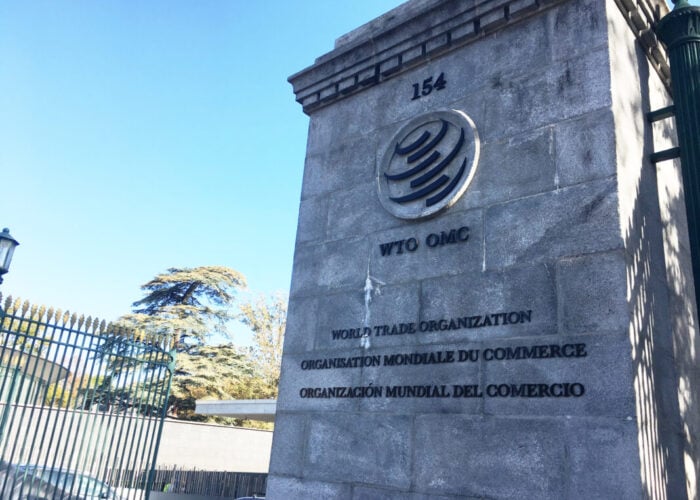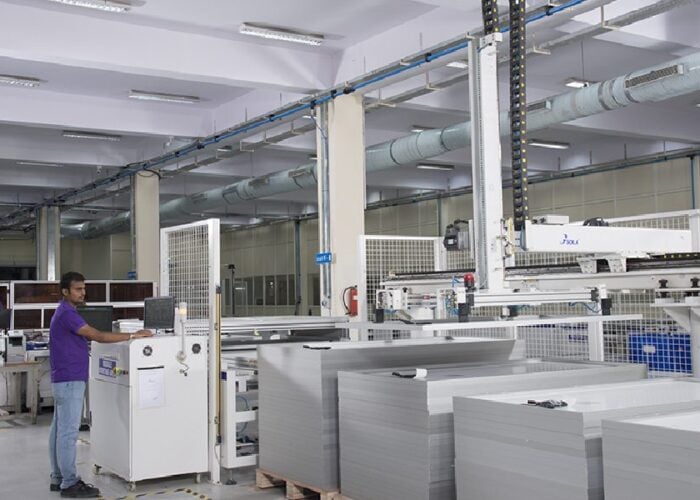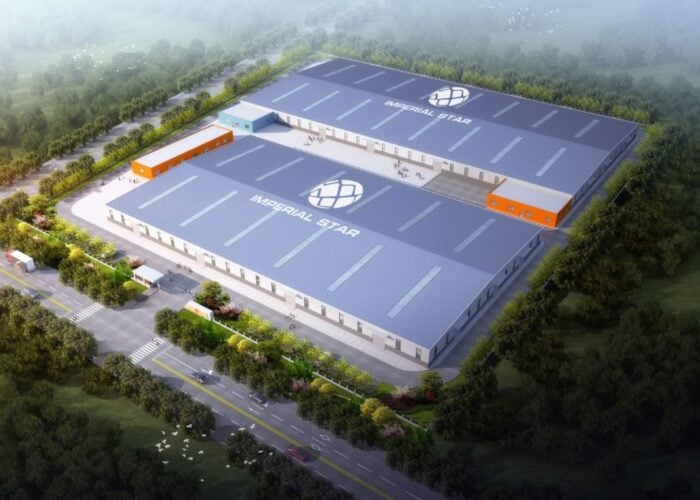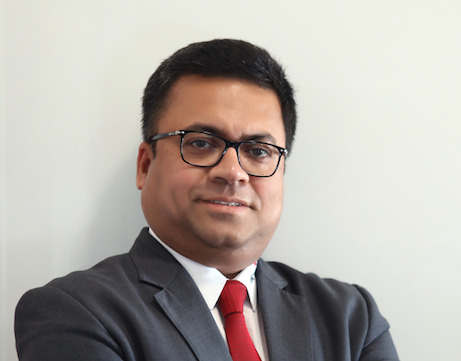
Ahead of PV-Tech’s inaugural PV IndiaTech event in Delhi on 24-25 April 2019, event Chair and head of research at PV-Tech, Finlay Colville, caught up with one of the keynote speakers at the event, Ivan Saha, the CTO of leading module supplier Vikram Solar.
Finlay Colville: Thank-you Ivan for taking the time to review your participation in our first PV IndiaTech event, where you will be delivering one of the keynote presentations. Before we dive into the content of the talk, can we touch first on what has been happening at Vikram Solar during the past few months?
Try Premium for just $1
- Full premium access for the first month at only $1
- Converts to an annual rate after 30 days unless cancelled
- Cancel anytime during the trial period
Premium Benefits
- Expert industry analysis and interviews
- Digital access to PV Tech Power journal
- Exclusive event discounts
Or get the full Premium subscription right away
Or continue reading this article for free
Ivan Saha: Thanks for inviting Vikram Solar to the PV IndiaTech Event. The event comes at an important juncture when the global PV industry in general is going through consolidation and the domestic industry in particular looks to grow in support of the upstream players with several announcements by the Indian government favouring manufacturing. At Vikram Solar we have been quite busy in the last quarter of the Indian financial year. We just commissioned our single largest utility-scale project of 280MWp at Andhra Pradesh which was built to a large extent with our own modules. A large number of rooftop projects were also commissioned during this period. We also achieved more than 95% capacity utilisation of our module manufacturing lines, planned for consolidation with new technologies like half-cut and bifacial mono PERC, and introduced DC optimiser based smart modules to the Indian market.
FC: Thanks. There has been much discussion and speculation about upstream cell and module expansions within India over the past few years. Vikram has focused until now on adding module capacity, while relying on high-quality cells imported to the country. Is this likely to continue going forward, and what would be the key factors that would cause this strategy to change?
IS: You are right in saying so far Vikram Solar has only focussed on adding module capacity, however over the years, we have explored, in right earnest, venturing into establishing upstream capacities. The global supply/demand dynamics and specific events like ‘China 531’ has forced us to reconsider our decision. In hindsight we have been quite lucky that we did not enter the upstream market at that particular times. However the recent government announcements in Indian solar sector like CPSU schemes, Integrated manufacturing bids, SGD etc. has forced us to rethink our strategy. Access to large overseas tariff-regulated markets has also been a key consideration. Our quest is to drive excellence in everything we do. Therefore running sub-optimal capacities without global competitiveness is out of the question. We will take the plunge sooner or later, and the time is about right.
FC: Vikram Solar has been one of the very few Indian PV manufacturers that has a strong background in exporting modules to key PV markets outside India. What would you say the key lessons learned are, from having global supply experience that are relevant to the Indian sector today?
IS: It is true that export sales is a key business growth metric for us. Our focus on capturing new markets across Europe, US, SE Asia and LatAm has made Vikram Solar arguably the best known Indian module brand there. The best sales experiences are when you interact with leading global developers and convince them to buy a Tier1 Indian brand over say, a Tier1 Chinese. Global customers engagement is based on honest conversations and transparency. One of the major lessons learnt is that you MUST have a winning Product in terms of proven quality, reliability and bankability. The performance of the product will speak for itself. Cost of ownership, rather than price, $/kWh rather than $/W, robust inline quality control over IEC testing are important parameters considered for module selection by international buyers.
FC: There have been many announcements related to domestic India investments for new manufacturing clusters, in addition to carve-out allocations arising from the DCRs. What do you see as the main challenges though to India having a strong multi-GW upstream segment that can complete with global leaders on cost, efficiency and quality?
IS: Having a consistent market over the next few years for these upstream capacities is the first key challenge. The learning curve in India is almost double than in China for obvious reasons, so a strong and sustained offtake support is the key. Apart from this, I think there are regular challenges like cost of power and capital, availability of land and manpower, local government issues, supply chain cost, etc. which ought to ease out once the upstream capacities reach a critical mass.
FC: Looking now at your talk for the PV IndiaTech 2019 event in Delhi on 24-25 April, what are the key messages you are looking to highlight during your talk?
IS: I am going to talk about some PV technologies which are proven to be relevant for Indian markets – both upstream and downstream. I am going to talk about what Indian solar players need to do to resolve current challenges and move ahead in their quest for global competitiveness.
FC: And finally, more broadly, what topics do you think the industry as a whole needs to address, if the government’s aspirations of moving from 100 to 300GW by 2030 are to be realized?
IS: According to a progressive scenario in ITRPV 2019 we are on the path to achieve about 15 TWp of solar by 2050 and about 5 TWp by 2030. Till date we have therefore only done about 2.5% of our potential in terms of global solar deployment till 2050. In India the 300GW target till 2030 is pretty conservative and very much doable in my opinion. Demand has never been a question. What the industry needs is to set the right pace for the downstream sector with well-planned bidding strategy designed to ease pressure on the entire value chain. In the upstream segment, investors' confidence needs to be restored with new players with GW-scale manufacturing. Government policies on both the downstream and upstream segments have to be mutually complementary, not exclusive. India desperately needs a 10 year PV roadmap driven holistically with all stakeholders – developers, manufacturers, equity investors, banks and policy regulators driven with a common will and discipline by the government.
FC: Thanks so much Ivan. We are all looking forward to hearing your talk in Delhi at PV IndiaTech, and to your contributions during the other sessions of the event.


